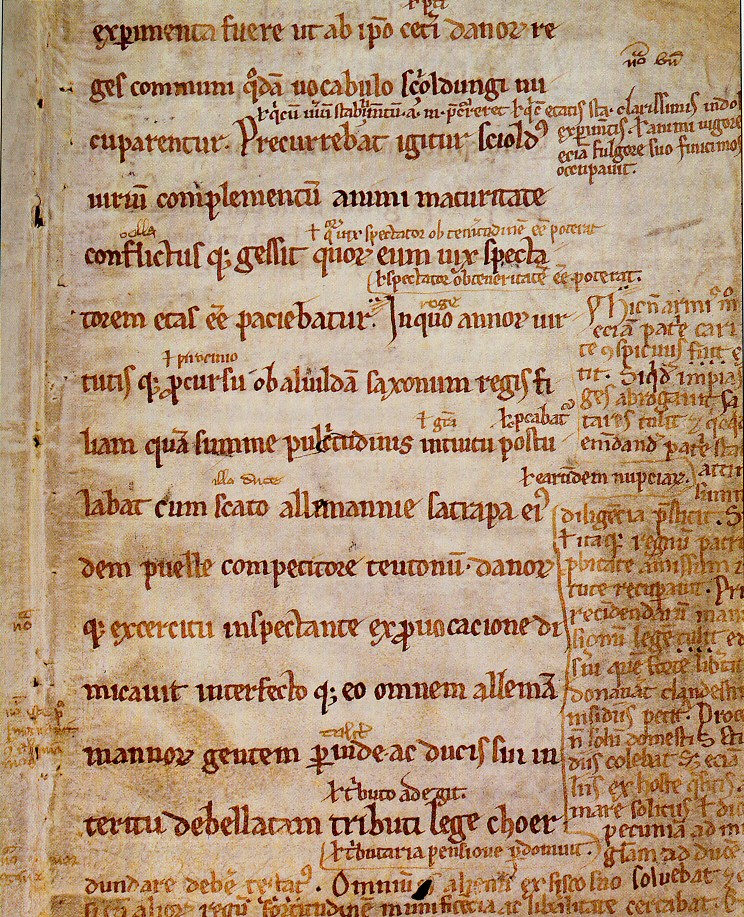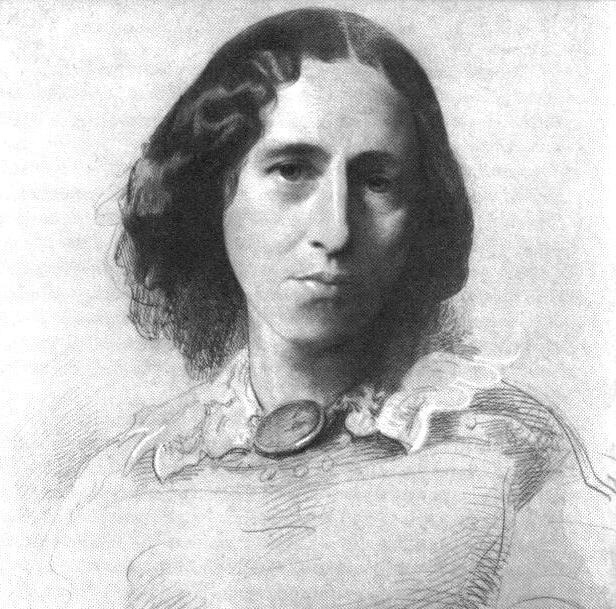|
Frederik Winkel Horn
Frederik Winkel Horn (19 July 1845 – 17 November 1898), was a Danish historian and translator, originally an archaeologist. He translated from numerous languages including Icelandic, Greek, and Latin. He was the first person to translate the novel ''Romola'' by George Eliot into Danish. Works * ''Mennesket i forhistorisk tid'', 1874 (culture in the old norse time) * ''Nordiske heltesagaer'', 1876 (Norse saga) * ''Peder Syv'', 1878 (study of Peder Syv) PhD dissertation * ''Den danske litteraturs historie'', 2 vol., 1881 (Danish literature history) * ''Dansk Læsebog for skolernes mellemste og højere klasser'', 1883 (Co-authored with Otto Borchsenius) * ''Grundtvigs liv og gerning'', 1883 (biography of N. F. S. Grundtvig) * ''Jomsvikingerne'', 1895 (Saga history of scandianvian) Translations (to Danish) * ''Den ældre Edda'', 1869 (The poetic Edda) * ''Billeder af livet paa Island'', 3 vol., 1871-1876 (the Iceland sagas) * ''E. Bellamy, Anno 2000-1889'', 1889 (Novel) * ''Saxo ... [...More Info...] [...Related Items...] OR: [Wikipedia] [Google] [Baidu] |
Frederik Winkel-Horn
Frederik Winkel-Horn, born Frederik Horn (12 November 1756 in Copenhagen Copenhagen ( ) is the capital and most populous city of Denmark, with a population of 1.4 million in the Urban area of Copenhagen, urban area. The city is situated on the islands of Zealand and Amager, separated from Malmö, Sweden, by the ... – 19 May 1837), Danish writer. From 1812, he called himself ''Winkel-Horn''. Works Source: * ''Adams og Evas Morgensang'', 1787 * ''Verdensalt'', 1834 * ''Min aandige Skjerv'', 1837 References 1756 births 1837 deaths Danish male writers Writers from Denmark–Norway {{Denmark-writer-stub ... [...More Info...] [...Related Items...] OR: [Wikipedia] [Google] [Baidu] |
Otto Borchsenius
Otto is a masculine German given name and a surname. It originates as an Old High German short form (variants ''Audo'', '' Odo'', '' Udo'') of Germanic names beginning in ''aud-'', an element meaning "wealth, prosperity". The name is recorded from the 7th century ( Odo, son of Uro, courtier of Sigebert III). It was the name of three 10th-century German kings, the first of whom was Otto I the Great, the first Holy Roman Emperor, founder of the Ottonian dynasty. The Gothic form of the prefix was ''auda-'' (as in e.g. '' Audaþius''), the Anglo-Saxon form was ''ead-'' (as in e.g. '' Eadmund''), and the Old Norse form was '' auð-''. Due to Otto von Bismarck, the given name ''Otto'' was strongly associated with the German Empire in the later 19th century. It was comparatively frequently given in the United States (presumably in German American families) during the 1880s to 1890s, remaining in the top 100 most popular masculine given names in the US throughout 1880–1898, but its ... [...More Info...] [...Related Items...] OR: [Wikipedia] [Google] [Baidu] |
1845 Births
Events January–March * January 1 – The Philippines began reckoning Asian dates by hopping the International Date Line through skipping Tuesday, December 31, 1844. That time zone shift was a reform made by Governor–General Narciso Claveria on August 16, 1844, in order to align the local calendars in the country with the rest of Asia as trade interests with Imperial China, Dutch East Indies and neighboring countries increased, after Mexico became independent in 1821. The reform also applied to Caroline Islands, Guam, Marianas Islands, Marshall Islands, and Palau as part of the Captaincy General of the Philippines. * January 10 – Elizabeth Barrett receives a love letter from the younger poet Robert Browning; on May 20, they meet for the first time in London. She begins writing her ''Sonnets from the Portuguese''. * January 23 – The United States Congress establishes a uniform date for federal elections, which will henceforth be held on the first Tuesday after t ... [...More Info...] [...Related Items...] OR: [Wikipedia] [Google] [Baidu] |
Michael Kohlhaas
''Michael Kohlhaas'' is a novella by the German author Heinrich von Kleist, based on a 16th-century story of Hans Kohlhase. Kleist published fragments of the work in volume 6 of his literary journal ''Phöbus'' in June 1808. The complete work was published in the first volume of Kleist's ' (novellas) in 1810. Both the theme (a fanatical quest for justice) and the style (existentialist detachment posing as a chronicle) are surprisingly modern. They resonated with other authors more than a century after they were written. The historical Kohlhase The merchant Hans Kohlhase lived in Cölln on the Spree (now incorporated into Berlin) in the Margraviate of Brandenburg in the 16th century. In October 1532 he set out on a trip to the Leipzig Trade Fair in the neighboring Electorate of Saxony. On the way two of his horses were seized, at the command of the Junker von Zaschwitz, as a supposed fee for passage through Saxony. Kohlhase sought redress in the Saxon courts but failed to obtai ... [...More Info...] [...Related Items...] OR: [Wikipedia] [Google] [Baidu] |
Ludvig Holberg
Ludvig Holberg, Baron of Holberg (3 December 1684 – 28 January 1754) was a writer, essayist, philosopher, historian and playwright born in Bergen, Norway, during the time of the Denmark–Norway, Dano–Norwegian dual monarchy. He was influenced by Humanism, the Age of Enlightenment, Enlightenment and the Baroque. Holberg is considered the founder of modern Danish literature, Danish and Norwegian literature. He was also a prominent Neo-Latin author, known across Europe for his writing. He is best known for the comedies he wrote in 1722–1723 for the Lille Grønnegade Theatre in Copenhagen. Holberg's works about natural and common law were widely read by many Danish law students over two hundred years, from 1736 to 1936. Studies and teaching Holberg was the youngest of six brothers. His father, Christian Nielsen Holberg, died before Ludvig was one year old. He was educated in Copenhagen, and was a teacher at the University of Copenhagen for many years. At the same time, h ... [...More Info...] [...Related Items...] OR: [Wikipedia] [Google] [Baidu] |
Gesta Danorum
("Deeds of the Danes") is a patriotic work of Danish history, by the 12th-century author Saxo Grammaticus ("Saxo the Literate", literally "the Grammarian"). It is the most ambitious literary undertaking of medieval Denmark and is an essential source for the nation's early history. It is also one of the oldest known written documents about the history of Estonia and Latvia. Consisting of sixteen books written in Latin on the invitation of Archbishop Absalon, describes Danish history and to some degree Scandinavian history in general, from prehistory to the late 12th century. In addition, offers singular reflections on European affairs in the High Middle Ages from a unique Scandinavian perspective, supplementing what has been handed down by historians from Western and Southern Europe. Books The sixteen books, in prose with an occasional excursion into poetry, can be categorized into two parts: Books 1–9, which deal with Norse mythology and semi-legendary Danish histor ... [...More Info...] [...Related Items...] OR: [Wikipedia] [Google] [Baidu] |
Poetic Edda
The ''Poetic Edda'' is the modern name for an untitled collection of Old Norse anonymous narrative poems in alliterative verse. It is distinct from the closely related ''Prose Edda'', although both works are seminal to the study of Old Norse poetry. Several versions of the ''Poetic Edda'' exist; especially notable is the medieval Icelandic manuscript '' Codex Regius'', which contains 31 poems. Composition The ''Eddic poems'' are composed in alliterative verse. Most are in ''fornyrðislag'' ("old story metre"), while '' málaháttr'' ("speech form") is a common variation. The rest, about a quarter, are composed in '' ljóðaháttr'' ("song form"). The language of the poems is usually clear and relatively unadorned. Kennings are often employed, though they do not arise as frequently, nor are they as complex, as those found in typical skaldic poetry. Authorship Like most early poetry, the Eddic poems were minstrel poems, passed orally from singer to singer and from poet to po ... [...More Info...] [...Related Items...] OR: [Wikipedia] [Google] [Baidu] |
Norse Saga
Sagas are prose stories and histories, composed in Iceland and to a lesser extent elsewhere in Scandinavia. The most famous saga-genre is the (sagas concerning Icelanders), which feature Viking voyages, migration to Iceland, and feuds between Icelandic families. However, sagas' subject matter is diverse, including legendary saga, pre-Christian Scandinavian legends; Heilagramannasögur, saints and Biskupasögur, bishops both from Scandinavia and elsewhere; konungasögur, Scandinavian kings and Samtíðarsögur, contemporary Icelandic politics; and chivalric romances either translated from Continental European languages or composed locally. Sagas originated in the Middle Ages, but continued to be composed in the ensuing centuries. Whereas the dominant language of history-writing in medieval Europe was Latin language, Latin, sagas were composed in the vernacular: Old Norse and its later descendants, primarily Icelandic language, Icelandic. While sagas are written in prose, they s ... [...More Info...] [...Related Items...] OR: [Wikipedia] [Google] [Baidu] |
Peder Syv
Peder Pedersen Syv (also spelled Siuf) or in Latin Petrus Petri Septimius (22 February 1631 – 17 February 1702) was a Danish Philology, philologist, folklore, folklorist, and priest, best known for his collections of Danish proverbs and folk songs and his contributions to the development of Danish language, Danish as a written language. Life Syv's father was an indentured peasant in the village of Syv (today called Kirke Syv) near Roskilde – probably one Peder Olufsen, and his mother Anna Mortensdatter. The family seems to have been fairly well off for their social class, and several of Peder's siblings were able to take up professions. One of his brothers seems to have been an uneasy soul, and died on a trip to the Danish East Indies, Danish East Indian colonies in 1674. In 1648, Syv entered the Latin school at Roskilde, where he lived at the cloister, holding the office of ''deputator'', an advanced student charged with overseeing the youths. He graduated in 1653 along wi ... [...More Info...] [...Related Items...] OR: [Wikipedia] [Google] [Baidu] |
Denmark
Denmark is a Nordic countries, Nordic country in Northern Europe. It is the metropole and most populous constituent of the Kingdom of Denmark,, . also known as the Danish Realm, a constitutionally unitary state that includes the Autonomous administrative division, autonomous territories of the Faroe Islands and Greenland in the north Atlantic Ocean.* * * Metropolitan Denmark, also called "continental Denmark" or "Denmark proper", consists of the northern Jutland peninsula and an archipelago of 406 islands. It is the southernmost of the Scandinavian countries, lying southwest of Sweden, south of Norway, and north of Germany, with which it shares a short border. Denmark proper is situated between the North Sea to the west and the Baltic Sea to the east.The island of Bornholm is offset to the east of the rest of the country, in the Baltic Sea. The Kingdom of Denmark, including the Faroe Islands and Greenland, has roughly List of islands of Denmark, 1,400 islands greater than in ... [...More Info...] [...Related Items...] OR: [Wikipedia] [Google] [Baidu] |
George Eliot
Mary Ann Evans (22 November 1819 – 22 December 1880; alternatively Mary Anne or Marian), known by her pen name George Eliot, was an English novelist, poet, journalist, translator, and one of the leading writers of the Victorian era. She wrote seven novels: ''Adam Bede'' (1859), ''The Mill on the Floss'' (1860), ''Silas Marner'' (1861), ''Romola'' (1862–1863), ''Felix Holt, the Radical'' (1866), ''Middlemarch'' (1871–1872) and ''Daniel Deronda'' (1876). Like Charles Dickens and Thomas Hardy, she emerged from provincial England; most of her works are set there. Her works are known for their literary realism, realism, psychological fiction, psychological insight, sense of place and detailed depiction of the countryside. ''Middlemarch'' was described by the novelist Virginia Woolf as "one of the few English novels written for grown-up people"Woolf, Virginia. "George Eliot." ''The Common Reader''. New York: Harcourt, Brace, and World, 1925. pp. 166–176. and by Martin Amis an ... [...More Info...] [...Related Items...] OR: [Wikipedia] [Google] [Baidu] |






